Best Haskell Programming Books to Buy in December 2025

Learn Physics with Functional Programming: A Hands-on Guide to Exploring Physics with Haskell


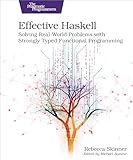
Effective Haskell: Solving Real-World Problems with Strongly Typed Functional Programming


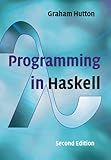
Programming in Haskell


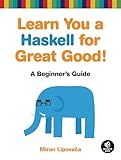
Learn You a Haskell for Great Good!: A Beginner's Guide
- HIGH-QUALITY, AFFORDABLE USED BOOKS FOR EVERY READER
- THOROUGHLY INSPECTED FOR QUALITY AND ENJOYABLE READING
- ECO-FRIENDLY CHOICE: REDUCE WASTE WHILE ENJOYING GREAT BOOKS


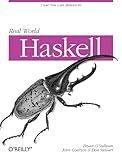
Real World Haskell
- QUALITY ASSURANCE: THOROUGHLY INSPECTED FOR GOOD CONDITION.
- COST-EFFECTIVE: SAVE MONEY WHILE ENJOYING GREAT READS.
- ECO-FRIENDLY CHOICE: HELP REDUCE WASTE BY BUYING USED BOOKS.


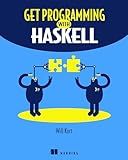
Get Programming with Haskell


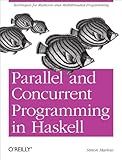
Parallel and Concurrent Programming in Haskell: Techniques for Multicore and Multithreaded Programming


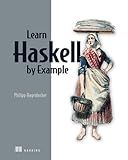
Learn Haskell by Example (Bookcamp)


In Haskell, filtering lists is a common operation that allows you to extract elements based on a given condition. There are multiple ways to filter lists in Haskell, some of which include using list comprehensions, higher-order functions, or recursion.
List comprehensions provide a concise way to filter lists by combining generators and guards. Generators define a source list, and guards specify the condition that an element must satisfy to be included in the resulting list. For example, consider filtering even numbers from a list:
evens :: [Int] -> [Int] evens xs = [x | x <- xs, even x]
This code creates a new list evens and populates it with only those elements x from the input list xs that satisfy the condition even x.
Alternatively, you can filter lists using higher-order functions, such as filter. The filter function takes a predicate function and a list as arguments, and returns a new list containing only those elements that satisfy the predicate. Here's an example:
evens :: [Int] -> [Int] evens xs = filter even xs
In this code, we use the even function as the predicate to filter out non-even elements from the input list xs.
If you prefer a recursive approach, you can define a filtering function that recursively traverses the input list and builds a new list by selectively appending the desired elements. Here's an example implementation:
evens :: [Int] -> [Int] evens [] = [] evens (x:xs) | even x = x : evens xs | otherwise = evens xs
In this code, the function evens takes an input list and pattern matches its elements against two cases. If the element x is even, it is included in the resulting list. Otherwise, it is discarded, and the function continues to process the rest of the list xs.
These are some of the approaches you can use to filter lists in Haskell, each with its own advantages and use cases. Choosing the most appropriate method depends on the complexity of the filtering condition and your preference for code readability and elegance.
How to filter a list based on a substring match in Haskell?
To filter a list based on a substring match in Haskell, you can use the filter function combined with a helper function that checks if a substring exists in a given string. Here's an example:
import Data.List (isInfixOf)
filterSubstrings :: String -> [String] -> [String] filterSubstrings substr = filter (isInfixOf substr)
main :: IO () main = do let myList = ["apple", "banana", "pear", "orange", "kiwi"] let filteredList = filterSubstrings "an" myList print filteredList
In this example, the filterSubstrings function takes a substring substr and a list of strings, and uses the filter function to return a new list containing only the strings that have substr as a substring. The isInfixOf function from the Data.List module is used as the predicate to check for substring matches.
When you run this code, it will output ["banana", "orange"], as these are the strings from the original list that contain the substring "an".
What is the behavior of the filter function on an empty list in Haskell?
The filter function in Haskell works by applying a given predicate function to each element in a list and returning a new list containing only the elements that satisfy the predicate.
When the filter function is applied to an empty list ([]), it simply returns an empty list as well. This is because there are no elements in the list to check and filter according to the predicate, so the resulting list will also be empty.
How to filter lists in Haskell?
In Haskell, you can filter lists by using the filter function. The filter function takes a predicate function and a list as arguments, and returns a new list containing only the elements that satisfy the predicate.
Here is the syntax for using filter:
filter :: (a -> Bool) -> [a] -> [a]
Here, (a -> Bool) is the type signature of the predicate function, and [a] represents the list.
Here's an example of using filter to filter out even numbers from a list of integers:
filterEven :: [Int] -> [Int] filterEven xs = filter (\x -> x `mod` 2 == 0) xs
In this example, \x -> x mod 2 == 0 is the predicate function, which checks if a number is even or not. We apply this predicate function to each element of the input list xs using filter, and it returns a new list containing only the even numbers.
You can also use filter with other types and predicates based on your requirements. Just replace the predicate function with an appropriate one for your use case.
How to filter a list based on a range of values in Haskell?
To filter a list based on a range of values in Haskell, you can use the filter function along with a custom predicate.
Here's an example of how to do it:
filterInRange :: (Ord a) => a -> a -> [a] -> [a] filterInRange minVal maxVal = filter (\x -> x >= minVal && x <= maxVal)
In this example, filterInRange is a function that takes a minimum value (minVal), a maximum value (maxVal), and a list of values ([a]), and returns a new list containing only the elements within the specified range.
The filter function takes a predicate function that determines whether each element should be included in the output list. The predicate function, in this case, checks if each element (x) is greater than or equal to minVal and less than or equal to maxVal. If the predicate returns True, the element is included in the output list; otherwise, it is filtered out.
You can use this filterInRange function as follows:
main = do let numbers = [1, 2, 3, 4, 5, 6, 7, 8, 9, 10] let filteredNumbers = filterInRange 3 7 numbers putStrLn $ "Filtered numbers: " ++ show filteredNumbers
Output:
Filtered numbers: [3,4,5,6,7]
In this example, the numbers list contains integers from 1 to 10. We use filterInRange 3 7 numbers to filter the numbers between 3 and 7, resulting in the list [3, 4, 5, 6, 7], which is then printed to the console.
What is the difference between filtering and mapping in Haskell?
Filtering and mapping are two common operations in Haskell that operate on lists or other data structures.
Filtering refers to the process of selecting elements from a data structure based on a given condition. It returns a new list containing only the elements that satisfy the condition.
The filter function in Haskell takes a predicate (a function that returns a boolean value) and a list, and returns a new list containing only the elements for which the predicate returns True. For example, given the list [1, 2, 3, 4, 5], filtering with the predicate even would return [2, 4], as only the even numbers satisfy the condition.
Mapping, on the other hand, refers to the process of applying a transformation function to every element in a data structure. It returns a new data structure of the same type, but with the transformation applied to each element.
The map function in Haskell takes a function and a list, and returns a new list containing the results of applying the function to each element of the original list. For example, given the list [1, 2, 3, 4, 5], mapping with the function (*2) would return [2, 4, 6, 8, 10], as each element is multiplied by 2.
In summary, filtering is used to select elements based on a condition, while mapping is used to transform each element using a function. Both operations are fundamental in functional programming and often used together to process and manipulate data.
What is the performance impact of filtering large lists in Haskell?
Filtering large lists in Haskell can have a significant performance impact, especially when the filtering function is expensive or the list itself is very large.
When filtering a list, Haskell iterates through each element of the list and applies the filtering function to decide whether to include or exclude it. This iteration creates a linear time complexity with respect to the length of the list.
For small lists or relatively cheap filtering functions, the impact might not be noticeable. However, when dealing with large lists or expensive filtering functions, the performance impact can become more pronounced.
To mitigate this impact, Haskell provides lazy evaluation. With lazy evaluation, Haskell only computes the elements of a list as they are needed, which means that it can avoid unnecessary computations when filtering.
Additionally, Haskell provides various optimizations like list fusion to further improve the performance of filtering operations. List fusion allows the compiler to fuse multiple list operations into a single loop, avoiding intermediate list creations and reducing overhead.
However, it's important to note that optimizing the performance of filtering large lists can be a non-trivial task, and it might require additional techniques like parallelism or streaming libraries to improve performance further.
